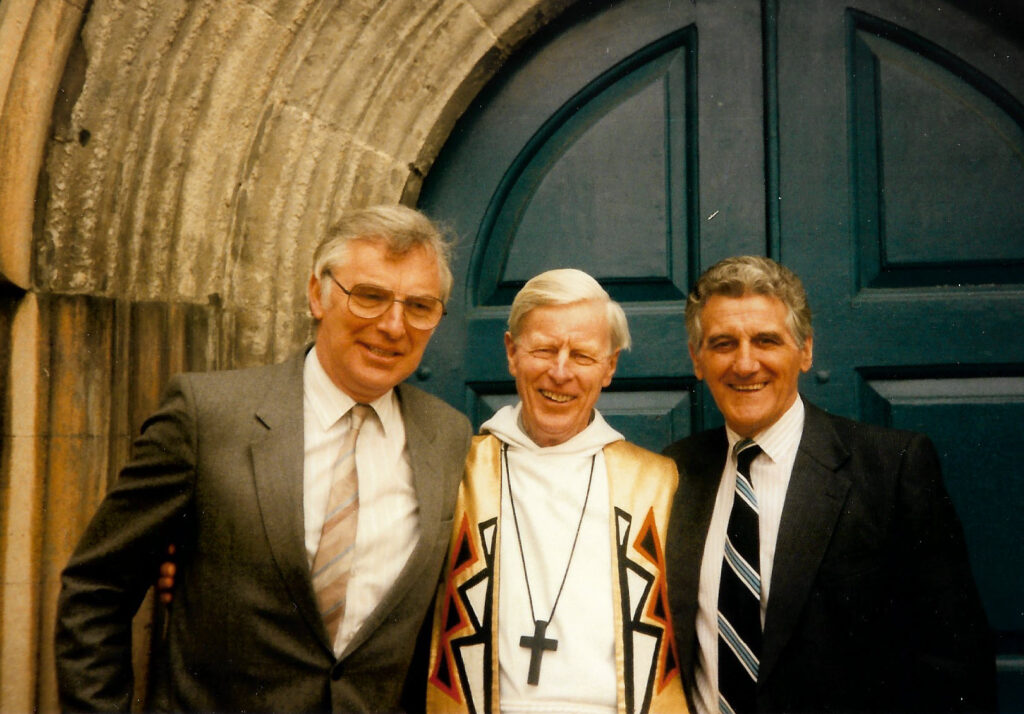For the first eight months of 1981 we were on ‘terminal leave’ – ominous term! – spent in USPG houses in London available to missionaries. I started job-hunting, not easy when the Church of England was still on the old boys’ network. Town jobs were mostly distributed by bishops to priests whom they knew from their days at Oxford, Cambridge or Durham. Rural posts depended on the patrons, often the local squire. A clapped-out Australian from Africa fitted into neither slot.
Tom Butler, a worker priest who had taught electronics at the University of Zambia and who had stayed with us in Malawi, was now Archdeacon of the Willesden Area in the Diocese of London and came to our rescue. At Uxbridge there was a town-centre church only a quarter of a mile from another. He didn’t know whether to close it or give it one last chance. Would I give it a go and find out what to do?

In September I went to be interviewed. It was my first time in north-west London. They had said, ”Just get off the train when it stops,” but omitted to mention that the line branched at Harrow-on-the-Hill and I was halfway to Amersham when the penny dropped. I arrived at Uxbridge an hour late and there were Don Price and Fred Teather, the two churchwardens of St. Margaret’s, waiting to meet me and quite unperturbed. They were to be my right and left hands for the next five years and remained friends for life.
St. Margaret’s, I later found out, had been in existence at least from 1200 when Radulfus was Chaplain of Uxbridge but the present building dated from the late 1300s. It had a magnificent south transept – actually bigger than the nave – added around 1450, which was said to have the second finest timbered roof in Middlesex. It was in the heart of the town right opposite the underground station.
In the 1960s the congregation had been down to seventeen, but my predecessor had brought it back to life in the 1970s and Don and Fred left me in no doubt that things were happening. After a long talk they gave me a key and left me to explore for myself. It was a cold and drizzly winter’s day and when I unlocked the old oak door the church smelled of decaying hassocks. I thought of Ezekiel in the valley of dry bones and his question: “Can these bones live again?” The story ended with the bones coming to life.
I said ‘Yes’ and the door opened on a new chapter of our lives. Thanks to its position in the centre of the town, members of the congregation every Saturday morning welcomed passersby for refreshments, within a year, due to many volunteers, this welcome extended from Monday to Saturday.
A large hall owned by the parish was ten minutes away where a youth group, Brownies Guides and community groups met. I floated the idea of selling the hall and using the proceeds to reorder the church, as was happening in a number of churches in London. Response from the PCC and congregation was enthusiastic. Young and old joined visits to five recently reordered churches, an architect was appointed and numerous meetings considered proposals.
While all this was going on members of the congregation met together in ‘clumps’ providing pastoral care to people living in groups of roads. Youth groups increased their activities, including camping weekends in Wales. Young people arranged informal evening services, also enjoyed by the over seventies. Energetic bellringers rang the eight bells twice a week.
Thanks to Tom Butler remembering Jane’s work with the Building Department in Malawi, she was invited to fill an unexpected vacancy for a Buildings Officer at the London Diocesan Board for Schools with its one hundred and fifty-two schools. For the first three years she coordinated work maintaining schools and building several new ones. For the remainder of her fourteen years with the Board, she wrote handbooks summarising legislation and procedures for headteachers and governors, many of which were used nationally.
Clergy stop being paid when they are seventy. A few months before I was pensioned off, the PCC and Diocese agreed work could start on creating a two-floored flexible building for worship, coffee and much else. Together with others I had had the interesting part of helping this happen, the hard job of working with the contractor and architect to bring the plans to life was left to my successor. We had enjoyed every minute of our five years at St Margaret’s and now had to find somewhere to live.
